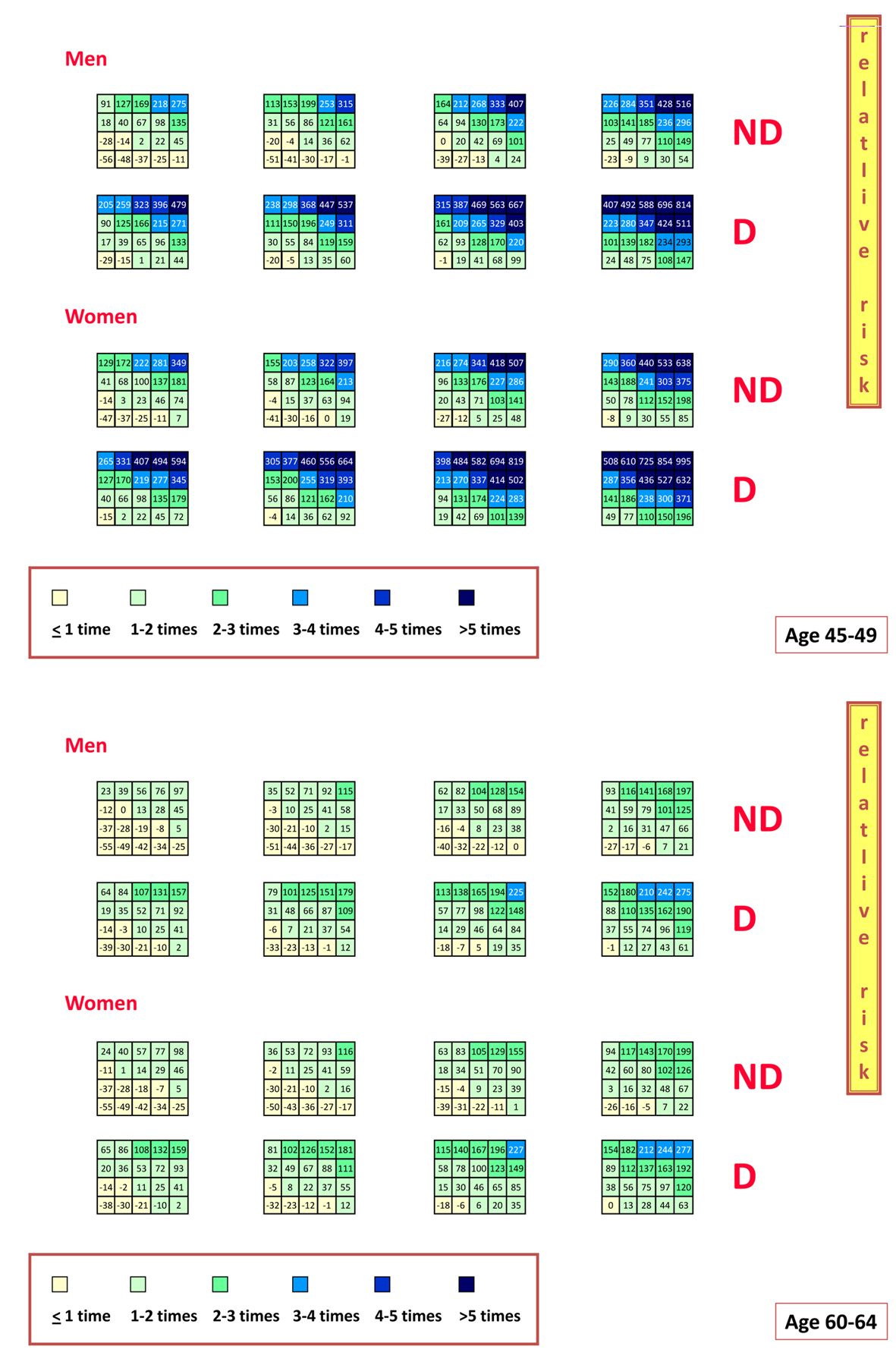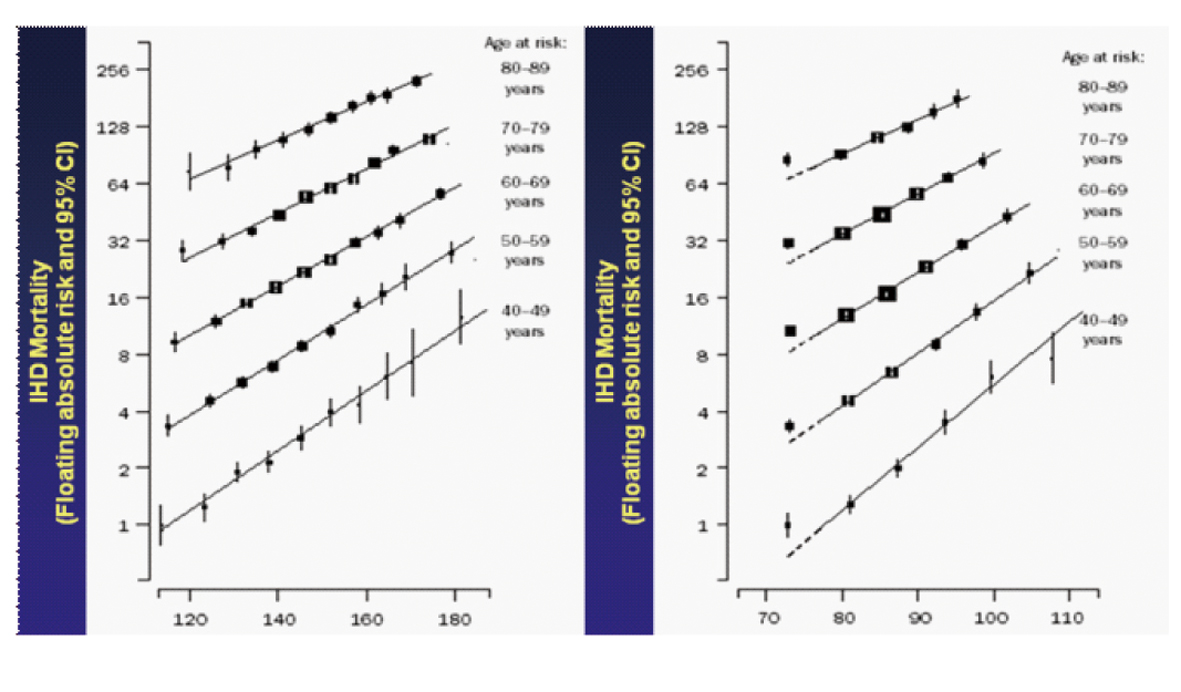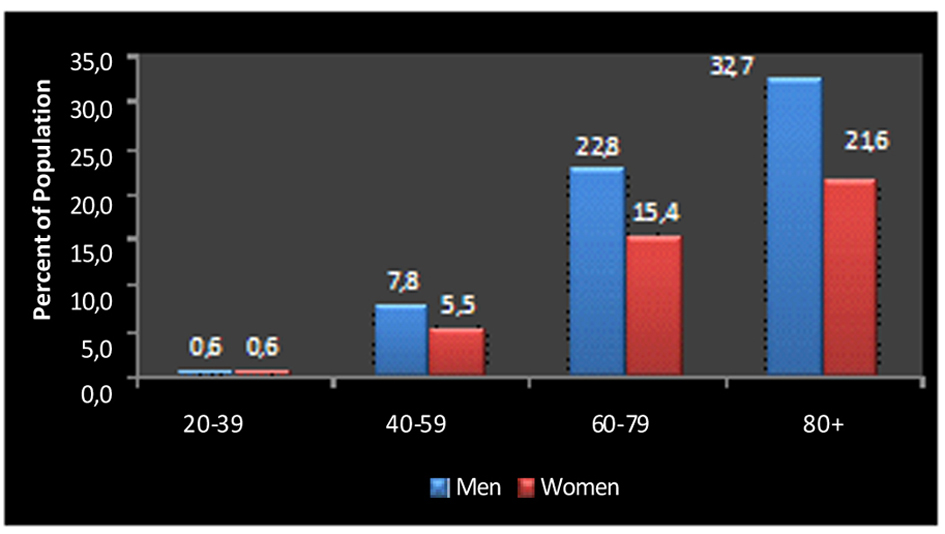
Figure 1. Exemples of primary relative risk in Italian men and women aged 45 - 49 (upper panel) and 60 - 64 (lower panel) years: the role of diabetes (D) versus its absence (ND) are clearly illustrated. Modified from [38]: relative risk is higher in younger diabetic women, although diabetes increases relative risk both in men and women.

Figure 3. Ischemic heart disease mortality by age and blood pressure. Information was obtained on each of one million adults (both sexes) with no previous vascular disease recorded at baseline in 61 prospective observational studies of blood pressure and mortality. During 12.7 million person-years at risk, there were about 56,000 vascular deaths (12,000 stroke, 34,000 ischemic heart disease (IHD), 10,000 other vascular) and 66,000 other deaths at ages 40 - 89 years. The study concluded that throughout middle and old age, usual blood pressure is strongly and directly related to vascular (and overall) mortality, without any evidence of a threshold down to at least 115/75 mmHg (here on X axis, related to IHD only). Modified from [42].


